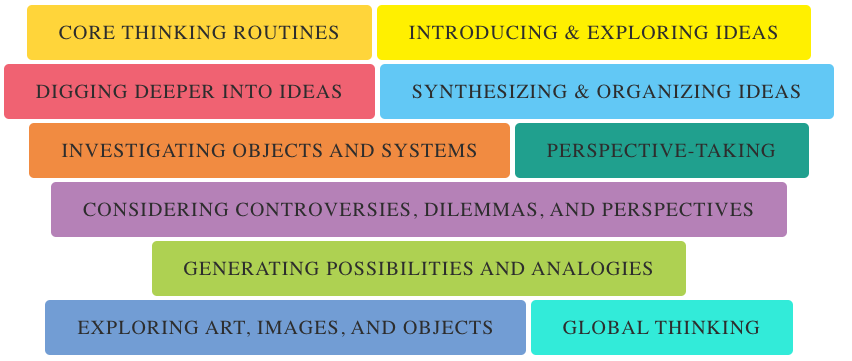Through a TLi Faculty Innovation Fellowship, I’ve been exploring how to adapt online discussion boards to create more genuine opportunities for dialogue, belonging, and learning. This initial blog will focus on why online discussions matter and how to get started with retooling. Part Two will focus on practical tweaks within Canvas’s existing structures. Part Three will look at manageable ways to facilitate.
The Sleight of Hand Conundrum

A discussion prompt in Canvas often engages in sleight of hand. In front of the audience, the prompt appears to encourage genuine interaction: write an initial post and then “respond thoughtfully to two of your classmates.” Behind the curtain, though, it’s a tool for evaluating students’ knowledge of content.
Students are experts at peeking behind the curtain. They can suss out an assignment’s real purpose through the prompt itself: formal phrasing, a minimum word count, a certain number of references, and use of key terms. They know that they’re mainly writing for an audience of one, so it’s perhaps unsurprising that peer responses trend toward perfunctory. As Michelle Pacansky-Brock and colleagues observe, “Online instructors must first establish trust with learners before meaningful peer-to-peer interactions are expected to occur” (5).
In the next sections, we’ll examine why student-to-student interaction deserves special attention. Then, we’ll consider alternatives to applying an evaluative purpose to a tool designed for generative thinking.
Why Dialogue Matters
Numerous studies tell us that higher quality interactions offer students more depth of learning, with more chance of academic success. For example:
- When Lee and Recker (2022) used a text-mining technique to analyze Canvas discussion boards from 72 online university math classes, they discovered that students who regularly lurked online in discussions contributed to their own success by listening in and, therefore, learning from their peers. Surprisingly, they found that “the breadth of online listening behaviors showed the highest predictive value for students’ final grades”(2007).
- When Lear (2010) surveyed 241 students in 30 asynchronous courses, results showed that online interactions correlated with students’ feelings of belonging, community, and their perception of learning and engagement.
- Though not in an online context, when Roscoe and Chi (2007) compared partner interactions with a similar solo assignment, they found that the questions produced during the interaction were formative. They concluded that “having a listening partner can foster greater learning in the explainer because their interactions can shape and challenge the explainer to learn more” (in Chi, 2009, 95).
Shifting our purpose from evaluation to thinking
Each time I begin a new discussion prompt, I’ve started asking myself a new foundational question. Rather than asking, “What content do I need to assess?” I’m now asking, “What kinds of thinking do I want students to generate that will help them apply, question, or connect the content?”
I’ve revisited my past discussion prompts to ask what I was assessing there. Many of those so-called discussions were really flat-out evaluations of key concepts that would have been better suited to another format, like an essay, a short answer quiz, or a presentation. (And who has rousing discussions about “key concepts”?)
Attending a webinar on Harvard’s Project Zero’s Thinking Routines Toolbox offered ways to identify “thinking moves” that focus on explicit reasoning and metacognitive processes involving points of view, dilemmas, contrasts, and connections. One caveat: the website linked above is geared more for K-12; I have found more complexity in the book Making Thinking Visible.

Thinking moves are not new to me, but amid the pressure to cover and assess content in online courses, I often overlooked them. For example, in adapting Sentence-Phrase-Word (a routine designed for “digging deeper into ideas”) for a discussion board, I could ask students,
First, generate a
- Sentence that was meaningful to you (captures a core idea)
- Phrase that moved, engaged, or provoked you
- Word that captured your attention
Read what your classmates had to say, and then post a synthesis of what you noticed:
- What themes emerge? What implications or predications can be drawn?
- What parts of the text were not captured? (Making Thinking Visible 207).
Though this particular example may not generate cross-talk, it gives students a reason to read one another’s ideas and encourages collaborative learning. Along the way, it will likely elicit those key concepts I was looking for.
Give it a look and see what you think of the visible thinking strategies, and stay tuned for Part Two, where we’ll get into practical Canvas tweaks to consider timing, cultivate trust, and build a sense of belonging.
I love this, Mary. I am always reminding that there is just so much good stuff out there from out P-12 colleagues that we can adapt for our contexts. I have learned so much from you about how an assignment can serve multiple purposes! Thanks!